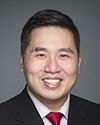We're in the process of doing exactly that.
First of all, on the recommendation by occupation, we reflect a bit what you see in society. We can point to eight occupations in the Canadian Armed Forces where the majority of women like to work, and a lot of them relate to health care. Forty-eight per cent of all the members in the Canadian Armed Forces health service are women. We see the same thing in support and administration, those kinds of occupations.
We don't have that many women who actually want to go into and become infantry soldiers. We encourage them when they're coming through, and we're seeing a growth in that aspect as well. We believe that once you begin having more people there, you will see a corresponding growth because there will be leaders who go forward.
Right now a number of our key combat arms lieutenant-colonels, the level at which they command units, are women and this is in the combat arms work, and of course for Jean Lanthier, and these are the kinds of folks you're starting to see pierce through there, so leadership is starting to emerge.
As for being able to cite targets for each occupation, the reality is that we are setting targets for anybody for each occupation, and we encourage women, when they show up, to go into non-traditional ones and the ones where we have the most need.
For example, we're looking to increase the number of sonar operators we have to make sure we can maintain our ships and have them sailing properly. When women are coming in, we're making sure that shows up as a priority occupation.
If we spend a bit of time, we can see that, on our recruiting websites, all of those priority occupations are there, and again, the emphasis is put on making sure women can see that they're welcome in each one of those occupations.




